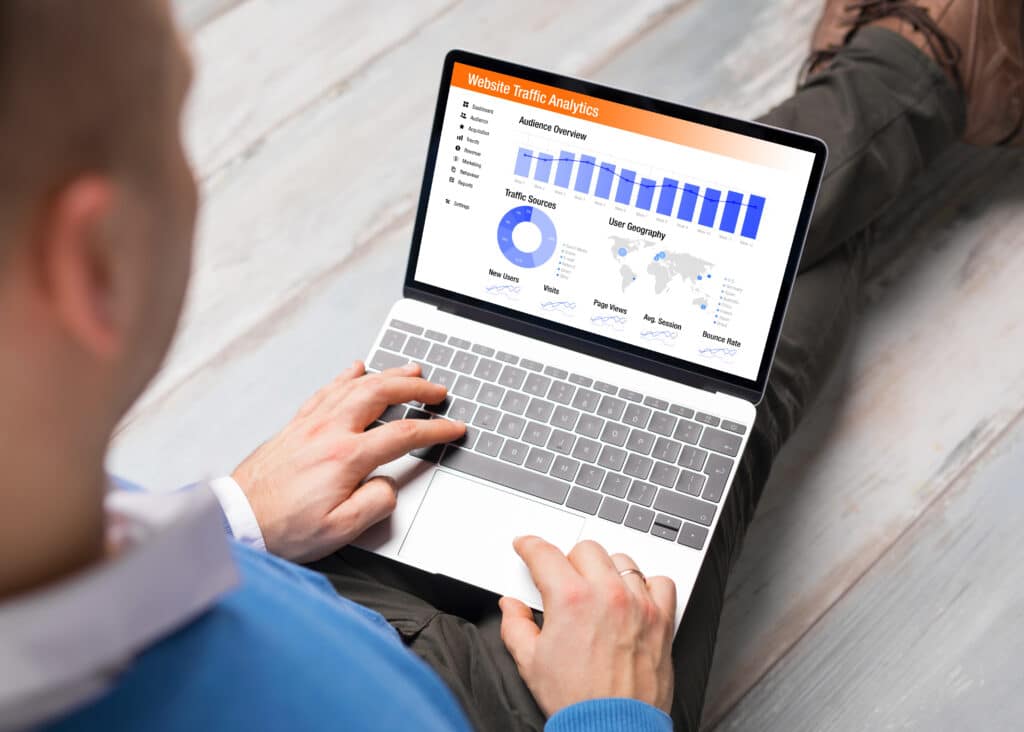What is On-Page SEO?

On-Page SEO refers to the practice of optimising individual web pages to improve their rankings in search engine results and attract organic traffic. Unlike off-page SEO, which focuses on external factors like backlinks, on-page SEO involves optimising the elements within your website. This includes content, HTML source code, and various other components that can influence your site’s visibility and user experience.
Click here to learn all about SEO
Key Elements of On-Page SEO

Effective on-page SEO involves attention to several key elements:
1. Content Quality
The content on your website should be informative, engaging, and relevant to your audience. High-quality content is the cornerstone of on-page SEO, as search engines prioritise pages that provide real value to users. Ensure your content is well-researched, original, and answers the questions or needs of your target audience.
2. Keyword Optimisation
Keywords are the terms and phrases that users enter into search engines when looking for information. Incorporating relevant keywords naturally into your content is crucial for on-page SEO. This includes using keywords in the title, headings, meta descriptions, and throughout the body of the text. However, avoid keyword stuffing, as it can harm your rankings.
3. Title Tags
The title tag is an HTML element that specifies the title of a web page. It’s one of the most important on-page SEO factors because it appears as the clickable headline in search engine results. Make sure your title tags are descriptive, concise, and include the primary keyword relevant to the page.
4. Meta Descriptions
Meta descriptions are brief summaries of web pages that appear under the title tag in search engine results. Although they don’t directly impact rankings, well-crafted meta descriptions can improve click-through rates by giving users a clear idea of what the page is about. Ensure your meta descriptions are compelling, include relevant keywords, and are within the recommended character limit.
5. Header Tags
Header tags (H1, H2, H3, etc.) are used to structure content and make it easier for users and search engines to understand the hierarchy of information on a page. The H1 tag typically contains the main title of the page, while H2 and H3 tags are used for subheadings. Proper use of header tags not only improves readability but also signals to search engines what the most important parts of your content are.
6. URL Structure
URLs should be clean, descriptive, and include relevant keywords. A well-structured URL helps both users and search engines understand the content of a page. Avoid using long, complicated URLs with unnecessary characters or numbers.
7. Internal Linking
Internal links are links that connect different pages within your website. They help search engines crawl your site more effectively and establish a clear site hierarchy. Additionally, internal linking can enhance user experience by guiding visitors to related content.
8. Image Optimisation
Images play a significant role in enhancing the visual appeal of your content, but they can also impact your page’s load time and SEO. Ensure all images are optimised by using descriptive file names, alt text, and compressing image sizes to improve page speed.
9. Page Load Speed
The speed at which your web pages load is a crucial ranking factor. Slow-loading pages can lead to high bounce rates, negatively impacting user experience and search engine rankings. Use tools like Google PageSpeed Insights to identify and fix any issues slowing down your website.
10. Mobile-Friendliness
With the increasing use of mobile devices, having a mobile-friendly website is essential. Google prioritises mobile-first indexing, meaning it primarily uses the mobile version of your site for ranking and indexing. Ensure your site is responsive and provides a seamless experience on all devices.
Why is On-Page SEO Important?

On-page SEO is vital because it helps search engines understand the content of your website and determine whether it’s relevant to a user’s search query. By optimising your on-page elements, you increase your chances of ranking higher in search results, driving more organic traffic to your site. Additionally, on-page SEO contributes to a better user experience, which can lead to higher engagement and conversions.
Best Practices for On-Page SEO

To maximise the effectiveness of your on-page SEO efforts, consider the following best practices:
- Regularly Update Content: Keep your content fresh and up-to-date by adding new information or revising old content to ensure it remains relevant.
- Use Schema Markup: Implement schema markup to help search engines better understand your content and improve how your pages are displayed in SERPs.
- Optimise for Featured Snippets: Structure your content in a way that makes it more likely to appear in featured snippets, which are short, direct answers that Google displays at the top of search results.
What is On-Page SEO? | Conclusion
On-Page SEO is a fundamental aspect of search engine optimisation that directly influences how your website performs in search engine rankings. By focusing on content quality, keyword optimisation, and technical elements like page speed and mobile-friendliness, you can improve your website’s visibility, attract more organic traffic, and ultimately achieve better results in search engines.
Click here to explore the differences between On Page and Off Page SEO
